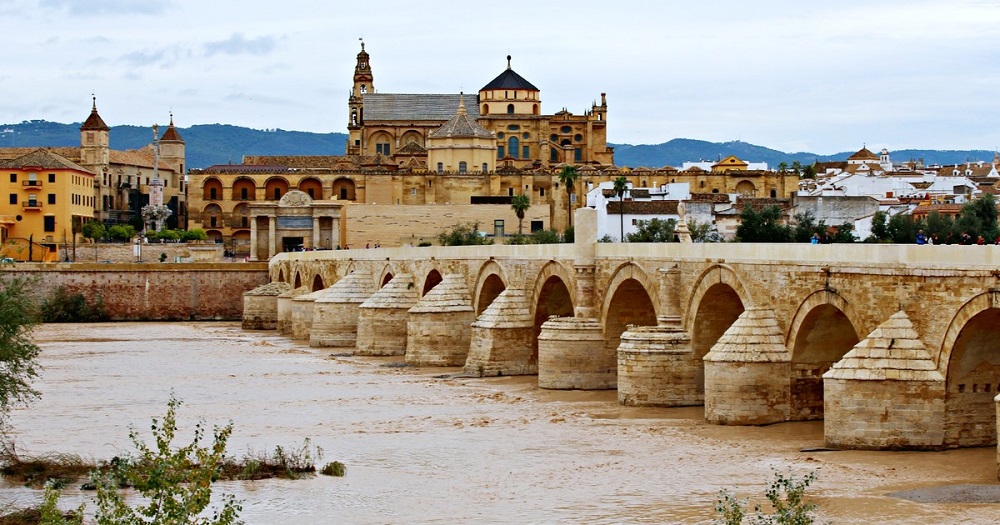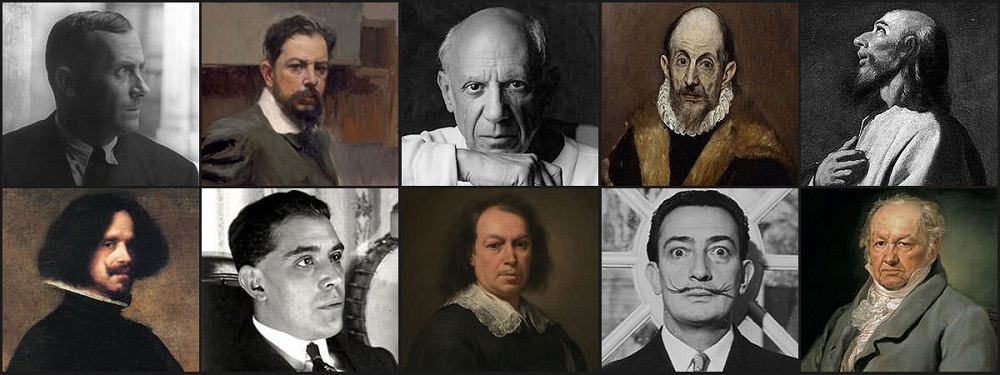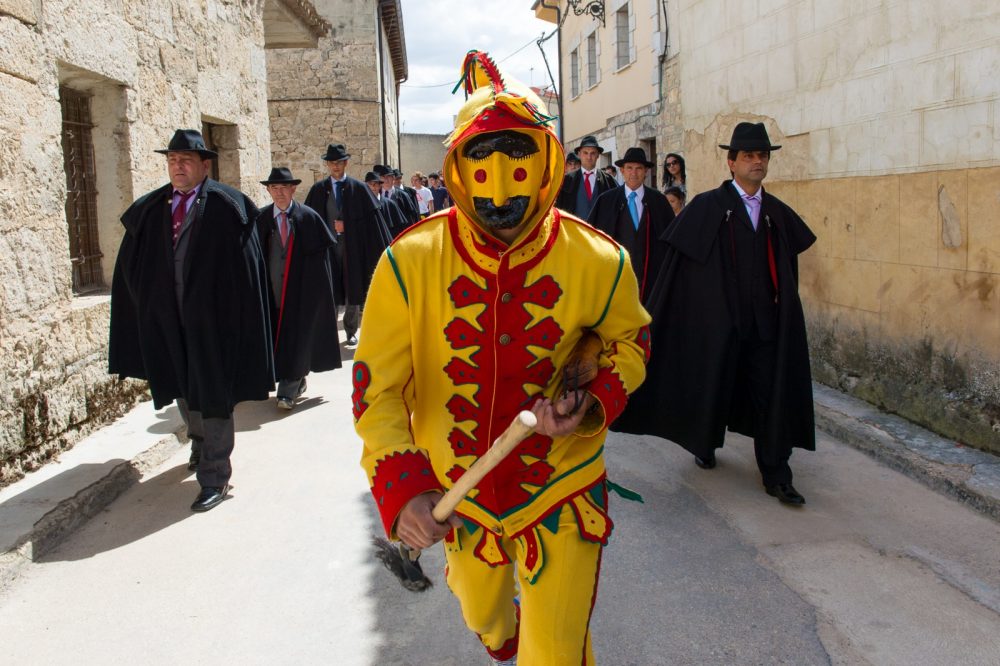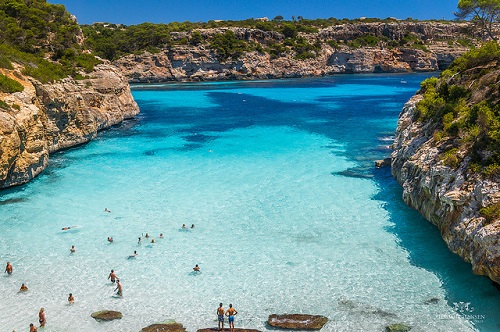Córdoba is in southern Spain’s Andalusian region, northwest of Seville and south of Madrid. Besides, it is one of the most famous tourist destinations in Spain. From its magnificent Mosque Cathedral to the imposing flowers adorned patios, this is a city with interesting monuments and activities to do in your vacation because there is something for everyone.
Read on for the 9 best things to see and do in Córdoba.
1. Mosque–Cathedral of Córdoba:
 via – getyourguide
via – getyourguide
Mosque–Cathedral of Córdoba is one of Spain’s cultural sight and the city’s great monument. Besides, the Moors captured Córdoba in 711, which had previously been a Visigoth Christian church was divided in two and used by both Christians and Muslims as a place of worship. But on the orders of the Emir Abd al-Rahman, the church was destroyed and work began on a great mosque.
Furthermore, building lasted for over two centuries and the construction was eventually completed in 987, by which point Córdoba was the most important city in the Islamic Kingdom. When the city was recovered by Christians in 1236, the mosque changed into a cathedral, and in the 16th century Charles V added a Renaissance nave on top of the Moorish structure. Today, the Mezquita is a UNESCO World Heritage Site and a cornerstone of Córdoba history.
The Moorish design is noticeable from the first sights of the building’s exterior. As you enter the courtyard and finally the inside, the mixture of architecture from this combination of cultures shows itself from the red and cream striped Moorish arches to the Gothic and Renaissance impacts predominant in the altars and side chapels.
2. Alcázar de los Reyes Cristianos :
 via – ruralidays
via – ruralidays
The Castle of the Christian Kings is one of the city’s major architectural landmarks. Besides, this magnificent royal compound has had a complicated history. Additionally, this palace was built in the 1300s as a fortress and later used as a residence by Queen Isabella and King Ferdinand as they set out to defeat the last remaining Moorish states in southern Spain. Nowadays, it’s one of Córdoba’s famous UNESCO World Heritage Sites.
Inside the castle, just its structure remains. However, there are splendid mid-century Roman frescoes, found in the 1950s, on display, that were originally part of the city’s Roman Circus. You can also climb the tower for a broad view of Córdoba and the palace gardens. After discovering the inside, take some time to saunter throughout the gardens, which include greens mixed with colorful flowers and orange trees. The peaceful landscape grows alongside surface, rectangular fountain pools. Peeking out between the shrubs and along the garden paths, catch the eye of the attractive monarch garden statues.
3. Roman Bridge:
 via – pixels
via – pixels
Roman Bridge or Puente Romano, considered as the most prominent in the city. Besides, it dates from the 1st century BC and was extensively reconstructed in the 10th century during the Moorish occupation of the city.
Moreover, sitting low over the opaque waters of the Guadalquivir, which flows down all the way through Andalusia and out into the Atlantic, it is supported by 17 stone arches, of which just two once is situated to the original structure.
Furthermore, the middle of the bridge, next to a 17th century statue of Saint Raphael, is the perfect place from which to see Córdoba and the green, hilly countryside that surrounds it. As well, the panoramas are picturesque to see, whether you are on the south bank viewing the Calahorra Tower and 16 arches with the Great Mosque in the background, or making the exciting crossing of the old city.
4. Medina Azahara:
 via – depositphotos
via – depositphotos
Medina Azahara located some 8km outside the city is just as fascinating. In the middle of the 10th century, ‘The Shining City’ was the administrative capital of Al-Andalus, as Moorish-controlled Spain was then known. Building begun in 936 on the order of the Umayyad Caliph of Córdoba, Abd-ar-Rahman III al-Nasir to display the power and strength of his kingdom.
Reorganizations continued for decades, but in 1010 Azahara was looted and thereafter stood deserted for centuries. The site was just rediscovered in of the 20th century and although they only account for about 10% of the original city.
5. Archaeological Museum:
 via – spainisculture
via – spainisculture
This museum displays the most complete collection of historic Spanish artifacts in the world, with a staggering 33,500 items in total. The museum includes prehistoric artifacts, primeval Iberian items containing sculptures and reliefs, Moorish art, Roman antiquities and archaeological finds from Medina Azahara. Situated at the Palacio de los Páez de Castillejo, the museum grounds are also home to an archaeological dig site on the premises.
Here, you will find the city’s original Roman amphitheater, as well as homes and workshops dating back to the Middle Ages, all of which were found long after the museum found its home here.
6. Feria de Córdoba:
 via – festivalesdelsur
via – festivalesdelsur
On the back of the Patios Festival is Córdoba’s annual spring fair, which dates back in the 13th-century. Additionally, it takes place for a week at the end of May and is centered on the Recinto, fairgrounds on the southeastern edge of the city, where huge Moorish-style arches invite you in. As well, there are some 100 tents (casetas) , where people go to eat, drink and make merry from the early afternoon until dawn the next day. Sevillian, classic dances influenced by flamenco and Castilian folk, equestrian shows, and firework displays are integral to the celebrations.
7. Concurso de Patios (Patio Festival) :
 via – spain-holiday
via – spain-holiday
Attractiveness of Córdoba is in full bloom each year in May during the Concurso de Patio. This famous festival is a competition between Córdoba residents for the prize of the most beautiful patio. In addition, the important prize is granted for patio with the most magnificent display of potted plants and colorful flowers.
Besides, many locals and tourists come out for this animated event, which has singing, dancing, and delicious tapas. To get a glimpse of the gorgeous patios bursting with lively blossoms, wander around the Alcázar Viejo district, between the Alcázar and the Iglesia de San Basilio; around the Santa Marina neighborhood; around the Iglesia de San Lorenzo; and near the Iglesia de la Magdalena.
Many lovely patios as well as the Calleja de las Flores (Alley of the Flowers) are found in the old Jewish quarter, the area surrounding the Mezquita. The most charming decorated historic patios of Córdoba can be seen in the Palacio de Viana featuring 12 different courtyards.
8. Jardín Botánico de Córdoba:
 via – paisajismodigital
via – paisajismodigital
An escape to nature right in the center of the city, the Botanical Garden of Córdoba is pervaded with lush vegetation, fountains, and spacious squares. The garden is planted with local species typical of the Mediterranean, such as rosemary hedges and hackberry plants. One area is dedicated to agricultural plants including aromatics, vegetables, medicinal herbs, and fruit trees.
Furthermore, tourists will find a Greenhouse near the central square of the park. This glass-enclosed environment is split into three sections, containing the species of specific locations: first are the Canary Islands, second are the Balearic Islands, and last is Andalusia. The garden also has a pleasing shaded passage and an Arboretum filled with a variety of trees and shrubs.
9. Parque Natural de las Sierras Subbéticas:
 via – andalucia
via – andalucia
The Sierras Subbéticas or Natural Park discovered in the dramatic limestone mountains outside of Córdoba. This rough landscape has typical Mediterranean vegetation such as oaks and olive trees. Birdwatchers will appreciate that abundance of species found in the park, including vultures, eagles, peregrine falcons and storks. Also, the natural park also includes a few small rural towns perched on hilltops. With their attractive whitewashed houses, these ancient White Villages (Pueblos Blancos) are full of Andalusian country charm.


 Top 10 Most Famous Spanish Artists and their Arts
Top 10 Most Famous Spanish Artists and their Arts
 El Colacho, the Baby Jumping Festival in Murcia Spain
El Colacho, the Baby Jumping Festival in Murcia Spain
 Discover The Most Beautiful Places In Mallorca, Spain
Discover The Most Beautiful Places In Mallorca, Spain